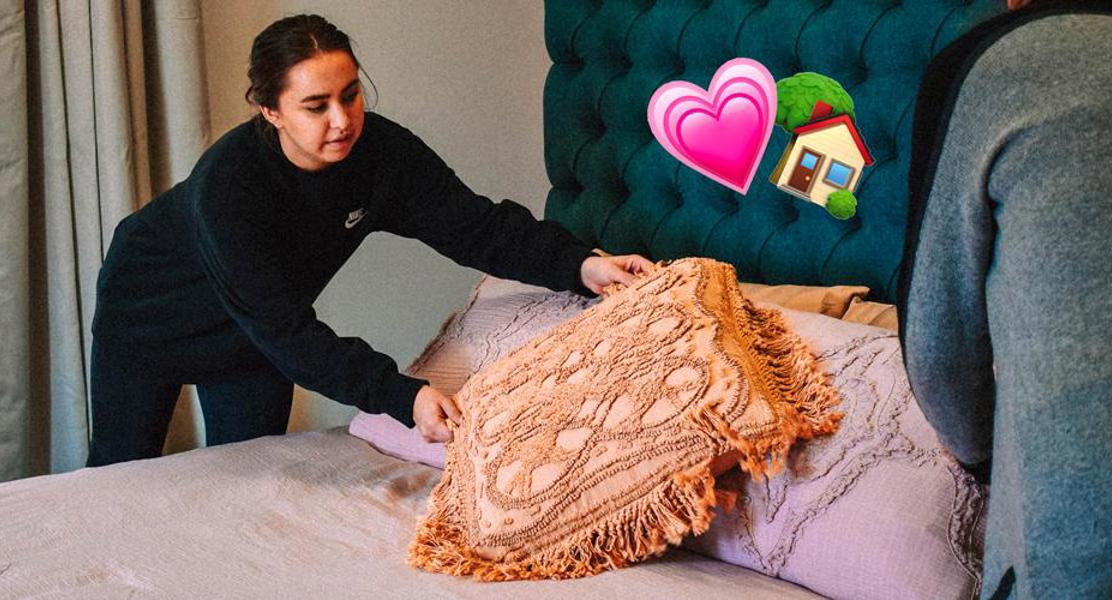
Author
Reading Time
3 minutes

Everyone deserves a house: a roof over your head and a safe space that you can relax in. For some, stable housing is, unfortunately, more of a dream than a reality, but the new Gardenhouse—a refuge offering emergency accommodation for vulnerable, older homeless women—is changing that, in part due to the contributions of Collarts Interior Design students and alumni.
As part of their Design For Humanity unit, students were briefed by Housing All Australians (one of the advocacy groups who were crucial to organising the Gardenhouse alongside the YWCA and Salvation Army) to provide the interior design for a six-bedroom shelter.
"It’s not every day you’re presented with the opportunity to turn people’s lives around," says alum Jacinta Ashby. "This project was so important as it allowed me to stop and give time to others, focusing on their needs."
Alum Tanja Popovic also jumped at the chance to give back to society.
"It was something that I had never really done or had a chance to: helping the community through design."
Working closely with the advocacy groups as well as sponsor Quest Apartments, students designed the colours, finishes, furniture and more, installing the final product on location.
Even while deep in the peak of Victorian lockdown, students worked collaboratively in teams, each assigned to a room, and used photos and videos for reference, eventually presenting to HAA founder Robert Pradolin over Zoom.
While each room embraced a different style, Head of Interior Design Bruno Duval describes every student’s approach as understanding, above all.
“They didn’t tackle this project as an assessment, but instead as an opportunity to make a meaningful and impactful difference in these women’s lives.”
When students discovered the Gardenhouse would finally be opening doors post-lockdown, excitement brewed.
"Definitely a great moment was when we were informed the building was able to start, after waiting through the COVID-19 lockdowns and receiving updates on the status of the build. It's one thing to plan things but when they start to take shape, it's truly exciting," says alum Mercy Canino.
Thanks to the connections of the Interior Design team and donations from Dulux Australia (paint) and Move In (small furniture, furnishings, lighting, art, accessories), designs started coming to life, each room its own welcoming safe haven.
“It went from an empty space to beautiful and homey rooms that would be comfortable and inclusive for the women,” student Sam Jeevadharshini observed.
And while the Gardenhouse initiative taught students to put themselves into the shoes of our vulnerable community members, Interior Design Coordinator Jenni Woods says that this—empathy, support, community—has always been a key pillar in the Interior Design course, and design at large.
“Providing support for those vulnerable to homelessness is high on our list of preferred projects as this is an area that interior designers specialise in. Creating a home with a sense of safety, security and community was the driver for this project. This is a space where the residents can start the healing process, find relief from trauma, make friends and for many start a new life,” she explains.
Ultimately, this knowledge has already gone a long way in preparing students for a holistic and compassionate design career, such as with alum Kate Izydorski for whom the Gardenhouse “provided a foundation to continue working with charities in a design capacity, and to be able to provide pro bono assistance when required.”
And using the tools at your disposal—whether that’s design or even entertainment—Sam discovered that “it doesn’t take much to make a difference.”
“Taking a small portion out of your day to assist in a volunteer project may not seem like much to you, but it could mean the world for someone else.”
If you are a charitable or not for profit organisation and you have a project our Interior Design students could support you with, please get in touch with Jenni Woods at jwoods@collarts.edu.au.